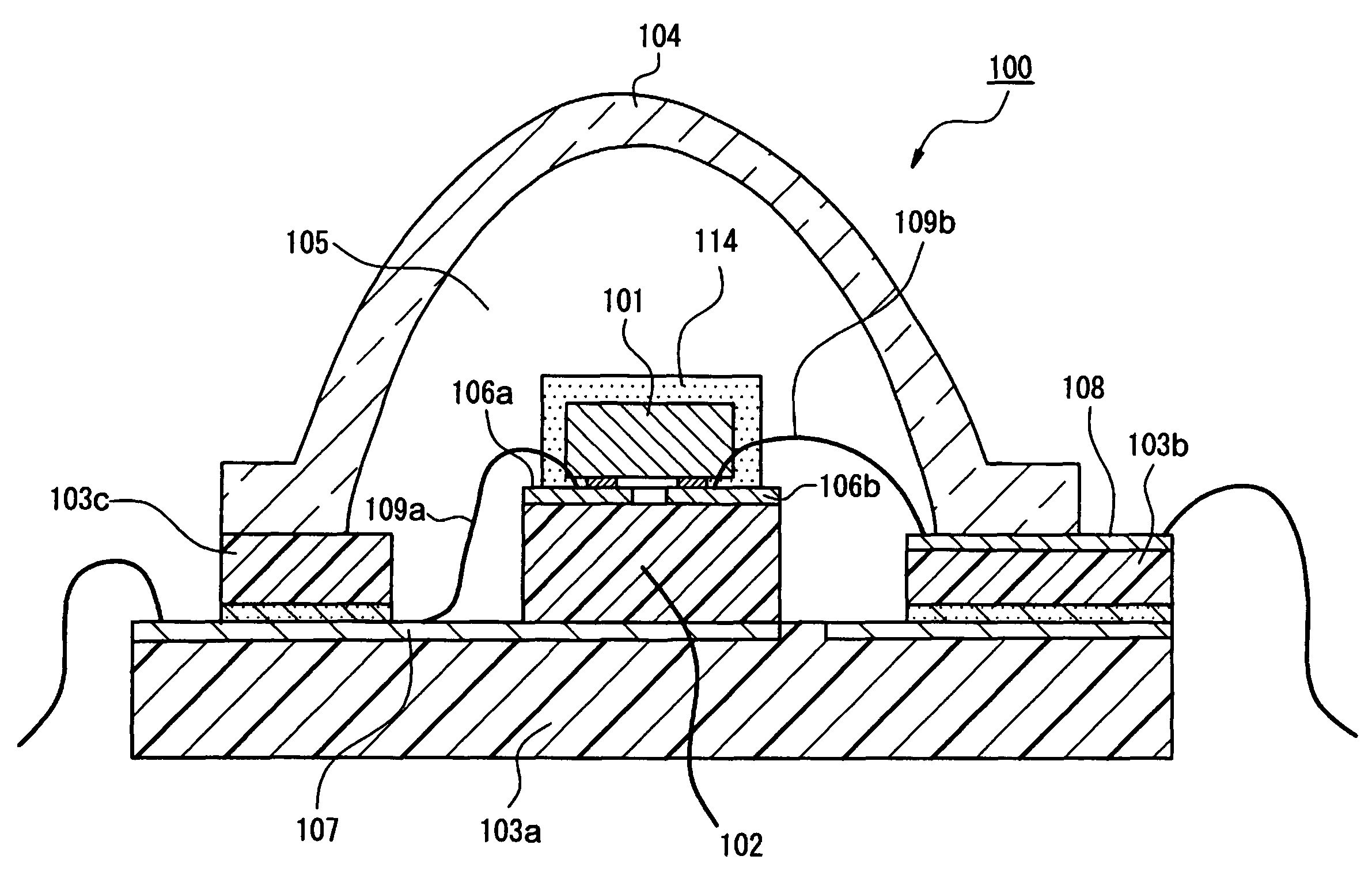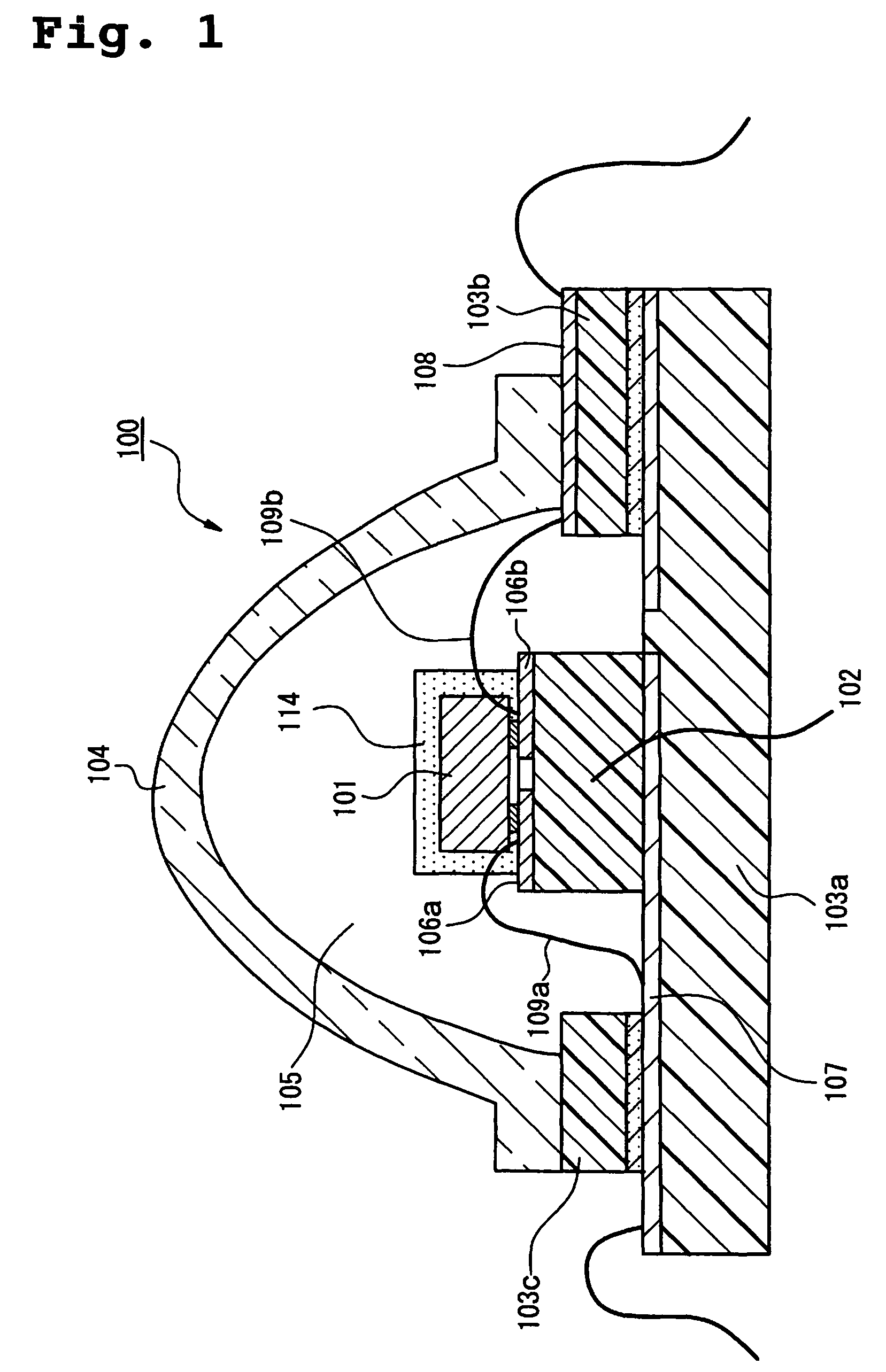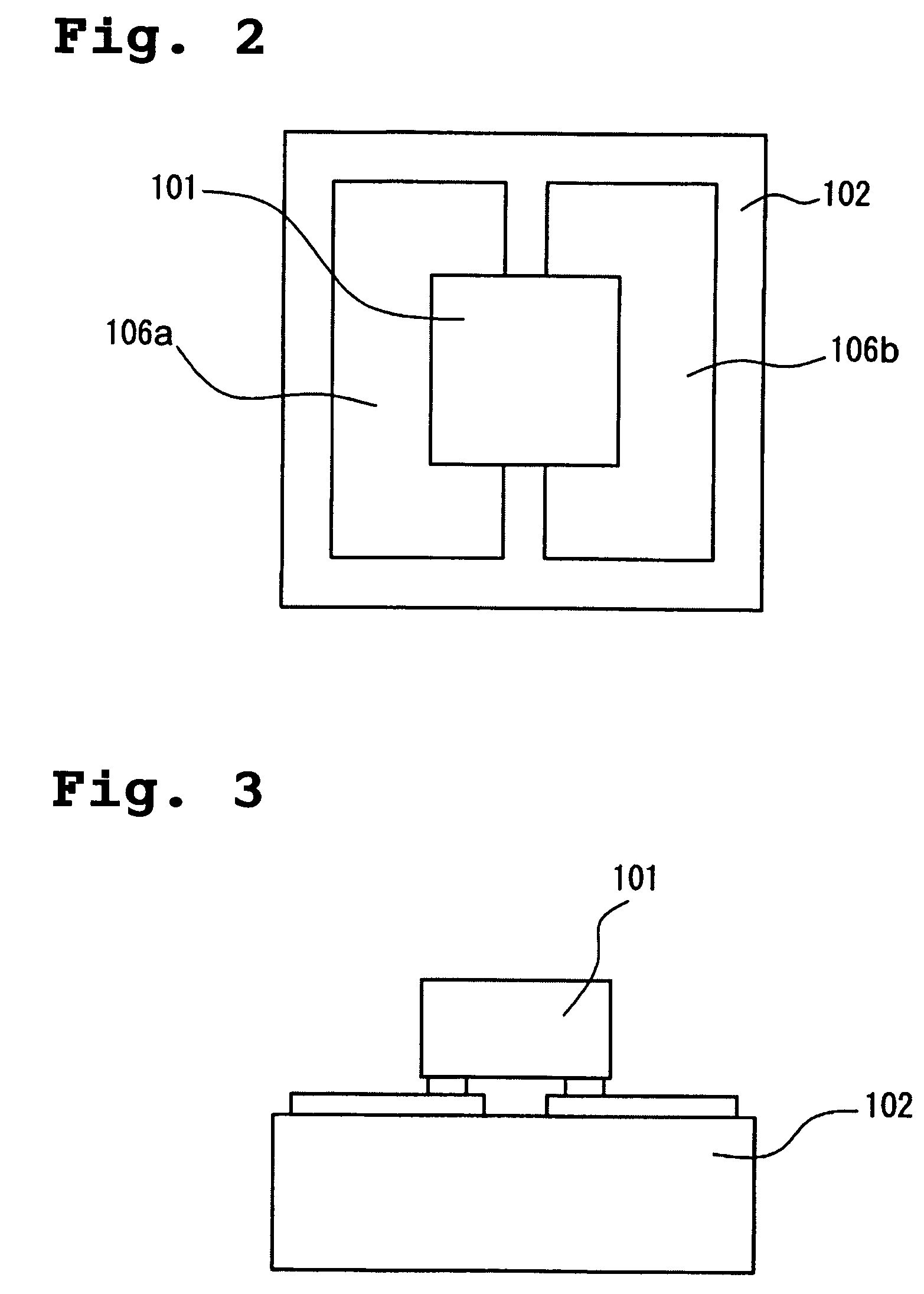Light emitting device with silicone resin layer formed by screen printing
a technology of silicone resin and light-emitting device, which is applied in the direction of thermoelectric devices, discharge tubes/lamp details, discharge tubes luminescnet screens, etc., can solve the problems of resin bleedout of low molecular weight, affecting the mechanical strength prone to deterioration of the main skeleton of the cured product, etc., to achieve excellent heat resistance and light resistance, excellent optical transparency, and superior mechanical strength
- Summary
- Abstract
- Description
- Claims
- Application Information
AI Technical Summary
Benefits of technology
Problems solved by technology
Method used
Image
Examples
embodiments
[0099]Next is a description of a specific embodiment of a light emitting device of the present invention.
[0100]FIG. 1 is a schematic cross-sectional view through a cross section perpendicular to the principal surface (the surface on which the element is mounted) of a support of a light emitting device 100 according to the present embodiment. In order to facilitate the description, the dimensions of each of the structural components and members have been magnified, so that the figure does not necessarily represent actual dimensions or relative sizes.
[0101]The light emitting device 100 has a sub-mount 102 to which a light emitting element 101 is flip-chip mounted, a support 103a for supporting the sub-mount 102, and a glass lens 104 which is a transparent member positioned on the principal surface side of the support 103a. The glass lens 104 is a hemispherical shaped lens, which has a convex shape when viewed from above the light emitting device 100 in the direction of the light emitt...
synthesis examples
[0109]The methyltrimethoxysilane used in Synthesis Examples described below is KBM13 (a brand name) manufactured by Shin-Etsu Chemical Co., Ltd., and the dimethyldimethoxysilane is KBM22 (a brand name), also manufactured by Shin-Etsu Chemical Co., Ltd.
synthesis example 1
[0110]A stirrer and a condenser tube were fitted to a 1 L three-neck flask. This flask was then charged with 109 g (0.8 mols) of methyltrimethoxysilane, 24 g (0.2 mols) of dimethyldimethoxysilane, and 106 g of isobutyl alcohol, and the mixture was cooled in ice with constant stirring. With the temperature inside the reaction system maintained at 0 to 20° C., 60.5 g of a 0.05 N hydrochloric acid solution was added dropwise. Following completion of the dropwise addition, the reaction mixture was stirred for 7 hours under reflux at 80° C. Subsequently, the reaction solution was cooled to room temperature, and 150 g of xylene was added to dilute the reaction solution. The reaction solution was then poured into a separating funnel, and washed repeatedly with 300 g samples of water until the electrical conductivity of the separated wash water fell to no more than 2.0 μS / cm. The water was then removed from the washed reaction solution by azeotropic distillation, and following adjustment of...
PUM
| Property | Measurement | Unit |
|---|---|---|
| thickness | aaaaa | aaaaa |
| temperature | aaaaa | aaaaa |
| temperature | aaaaa | aaaaa |
Abstract
Description
Claims
Application Information
 Login to View More
Login to View More - R&D
- Intellectual Property
- Life Sciences
- Materials
- Tech Scout
- Unparalleled Data Quality
- Higher Quality Content
- 60% Fewer Hallucinations
Browse by: Latest US Patents, China's latest patents, Technical Efficacy Thesaurus, Application Domain, Technology Topic, Popular Technical Reports.
© 2025 PatSnap. All rights reserved.Legal|Privacy policy|Modern Slavery Act Transparency Statement|Sitemap|About US| Contact US: help@patsnap.com



